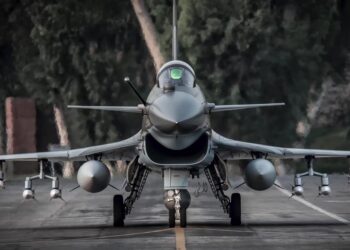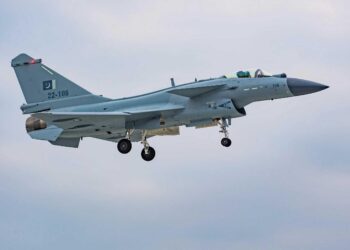NEWTOWN, Conn: Sustained by the spending habits of the Gulf nations, the Middle East represents one of the world’s most robust defense markets and should remain that way in the near future.
The six countries (Bahrain, Kuwait, Oman, Qatar, Saudi Arabia, and the United Arab Emirates) that make up the Gulf Cooperation Council (GCC) will account for roughly 60 percent of all defense expenditures made in the region in 2010, according to a recent Middle East military market analysis by Forecast International. In 2010, these countries are projected to invest over $63 billion toward their armed forces and security, with two-thirds of that total contributed by Saudi Arabia alone.
FI expects that this trend will continue. Combined GCC defense spending is expected to rise in 2011 by an additional 2.5 percent. Over the next five years, the greater Middle East defense market is projected to grow by over 11 percent, reaching nearly $120 billion by 2014.
The seemingly unstoppable defense-spending binge by the Middle East and the GCC members has been fueled by their quest to close the strategic gap between themselves and regional rival Iran by acquiring superior military hardware and technologies.
“The GCC members continue to cast a wary eye across the Gulf at Iran,” said FI’s Middle East Defense Analyst Dan Darling. “Under the perception that Iranian hegemonic ambitions constitute their principal and most immediate strategic threat, these countries have been focusing on air, missile defense, and naval assets. By acquiring these types of platforms, the GCC members hope to offset Iran’s quantitative advantage in manpower and missiles. The result of these ambitions has been an annual level of defense spending by the GCC members that is disproportionate to the relatively small size of their militaries.”
Though concerns over Iran’s nuclear program and aggressive posture are the major motivating factors behind the defense-spending habits of the GCC, other issues are at play. The anxieties of the GCC not only extend across the Gulf and along their borders, but are also aimed inward. Internal security remains a priority for the Gulf kingdoms, evinced foremost by Saudi Arabia’s multi-billion dollar Saudi Border Guard Development Program (SBGDP). This external-internal dynamic serves as the driver of GCC defense investment. As a result, GCC defense expenditure in 2008 exceeded 5.6 percent of GDP, compared to the global average of 2.4 percent.
Defense investment in the Middle East is not confined to the GCC countries alone. Israel remains the second-largest defense spender in the region and is also the largest beneficiary of Foreign Military Financing (FMF) from the U.S. Israel is slated to receive $2.775 billion in FMF from Washington this year, all of it gratis. This money will help finance defense equipment development and purchases for the Israel Defense Forces. Major defense programs in the Israeli pipeline include the purchase of an initial batch of 25 F-35 Joint Strike Fighters, as well as locally built naval corvettes and the final development and implementation of five air-defense missile-interceptor systems that constitute the bulk of the Israeli C-RAM (counter-rocket, artillery and mortar) program.
Another factor that has emerged in the Middle East defense market is Iraq, where rebuilding the Iraqi military capability remains an ongoing process. With the final removal of U.S. forces from Iraq under the Status of Forces Agreement now scheduled for December 31, 2011, the Iraqi Security Forces (ISF) must continue to improve their conventional capabilities. This will involve the procurement of indirect fire, air, and air-defense assets.
However, budgetary problems may hinder Iraq’s ability to acquire certain U.S. platforms in the short term, with Baghdad forced to seek out secondary suppliers in order to make immediate purchases. Several Iraqi government-to-government purchases of U.S. equipment under the Foreign Military Sales program have been held up by Baghdad’s inability to pay in full.
“Because of the need to fill out the ISF, Iraq remains an enticing market for defense suppliers,” said Darling. “In the near future, the ISF will have to handle full security responsibility for its own borders, airspace, and the lone Gulf port of Umm Qasr. Though it placed $16 billion worth of FMS requests with the Pentagon in 2008, the Iraqi government is also intent on diversifying its source of supply, which will provide opportunities for other countries to play a role in equipping the new Iraqi military.”
Because of the continued strength of the greater Middle East, suppliers are looking to lock down their own corners of the market. The United Kingdom is the second-largest arms provider to the region, followed closely by Russia, which has carved out a niche for itself from countries sidelined by Western suppliers. Russia’s clientele includes Iran, Syria, and Yemen. Furthermore, Moscow is hoping to soon finalize a $2-$4 billion arms package with Saudi Arabia.
But the U.S. remains by far the biggest supplier to the region. From 2005 through 2008, the U.S. delivered more than half of the Middle East’s military hardware. Though the U.S. remains sensitive to the potential erosion of Israel’s regional qualitative military edge, it has granted major equipment sales to Gulf nations in recent years, including advanced air defense systems and “bunker-buster” bombs to the UAE, AH-64D Apache Longbow attack helicopters to the Saudis, and F-16s and Harpoon and Hellfire missiles to Egypt.
“The U.S. export strategy to the region is two-pronged,” says Darling. “It reinforces the sense of U.S. support for its regional allies, while at the same time building a strategic firewall against the threat of Iranian regional expansion. In the process, defense trade cooperation allows the U.S. to recycle petrodollars and improve the interoperability between its armed forces and those of the Gulf nations, Egypt, Israel, and Iraq. Yet while the U.S. has a pervasive defense influence in the Middle East, the underlying regional dynamics mean that there remain healthy market shares for other suppliers.”









